press reviews
Sounds Fantastic
Written by Susan Nickalls, Classical Music Magazine
reproduced with permission
Centred in Aberdeen, the sound festival brings a rare shot of concentrated contemporary music to Scotland's north east. Susan Nickalls previews the 2009 programme.
Although last year's sound festival coincided with the start of the crunch, more than 6,000 people attended concerts and events across the north east of Scotland during the four-week jamboree of contemporary music. It is evident from the exciting line-up for sound's fourth festival, that the recession has not dampened its adventurous vision.
This year the festival which runs from 28 October to 22 November, boasts 60-plus concerts and events including four themed weekends: Dance Live, Resonant Frequencies, the sound Residency and the James MacMillan 50th Birthday weekend. A supporter of sound since its inception, the composer last year joined Dame Evelyn Glennie as a patron of the festival. His new work Who are These Angels?, a co-commission between The Edinburgh Quartet, sound and Rotterdam's De Doelen concert hall, will be performed by the Edinburgh Quartet and the Chapel Choir of King's College Aberdeen at a 'composer portrait' concert on Saturday 21 November.
During the course of the weekend MacMillan will judge the University of Aberdeen Music Prize at a gala concert which has seen the university shift the biannual composition competition from its spring slot to coincide with the sound festival. Members of the BBC Scottish Symphony Orchestra will perform five new works competing for £5,000 and a BBCSSO commission while the orchestra itself will premiere music from MacMillan's opera The Sacrifice on Friday 20 November. Other works by the composer will be performed by the University New Music Group and the Chapel Choir of King's College with MacMillan delivering the sermon at the Sunday service in the chapel as part of events to celebrate 500 years since its consecration.
MacMillan will also give the inaugural sound lecture - 'Aesthetic plurality and licence in British contemporary music. Is it better here than elsewhere?' - on 22 November. In particular MacMillan will argue that Marxist ideology has been a detrimental influence in understanding modernity in music and discuss the plurality of styles and ideas which he says is one of the greatest strengths of contemporary music in Britain.
One group at the forefront of contemporary music is Pianocircus, which will open sound on 28 October at Aberdeen's Beach Ballroom. The ensemble will then go on to deliver Keyboard Collective, a six-month education project in five secondary schools across Aberdeen and the surrounding shire and into Culloden and Nairn. sound programme coordinator Fiona Robertson says this is the first time the festival has launched such a large-scale education project. 'Usually our workshops and community events have been one-offs so this is the first year we've done something of this size. It's been quite expensive and complicated to organise but following their work in schools on playing and composition using keyboards, Pianocircus will return in May to bring together the work that's been going on in a concert which will include some of the student's compositions and hopefully a new commission.'
Robertson is also looking forward to the first sound residency weekend that brings together flautists Richard Craig and Roberto Fabbriciani, Slovenian clarinettist Tadej Kenig and former Arditti Quartet cellist Rohan de Saram, particularly as last year Fabbriciani had to cancel his festival appearance at the very last minute. The musicians will spend four days rehearsing and then performing new sound festival commissions written by Pippa Murphy, Oliver Searle, Gareth Williams and Paul Tierney, all inspired by paintings at the Aberdeen Art Gallery. Despite such an unusual combination of instruments, Robertson says there is existing repertoire for flutes, clarinet and cello which the quartet will play in a separate concert alongside a new work by Steve Davismoon for this combination. 'The residency is something quite new for us as we've often had musicians coming up to work on things for a few days but we've never had four individuals who don't usually work together coming together for a whole week which is quite exciting.'
Music and dance collaborations are at the heart of the Dance Live programme over the first week of the festival. The Soundings concert on Saturday 31 October features choreographer and dancer Michael Popper with cellist Clea Friend in Nigel Osborne's Remembering… …Forgetting, for choreographed bass voice and cello, based on the writings of Russian poet Sergei Esenin. The following week, the spotlight falls on experimental music in Resonant Frequencies curated by Bill Thompson which will explore the crossover between percussion and live electronics. On 19 November, Thompson together with Keith Rowe and Rick Reid will present his installation/performance Shifting Currents while the following night up and coming bands will appear at Aberdeen's Lemon Tree as part of an evening with Chemikal Underground Records, one of Scotland's leading independent labels.
While Robertson concentrates on programming the themed weekends, another 30 or so organisations in the sound network programme events inbetween. Given that sound was set up for local people to encourage them to widen their musical horizons, Robertson is delighted to see the effects spilling over into the rest of the year. 'Strathy Music Club have started commissioning contemporary works outwith Scotland which is something they wouldn't have done four years ago and Left Bank, a tiny gallery in my local village Tarland who promoted several electroacoustics concerts last year, is looking to put more events throughout the year.'
It's this innovative structure which is grounded in the community that allows sound to pursue an eclectic diversity that makes it one of the country's most hotly anticipated festivals.
- published on 10 October 2009
- written by Susan Nickalls for Classical Music Magazine
Reproduced with permission.

